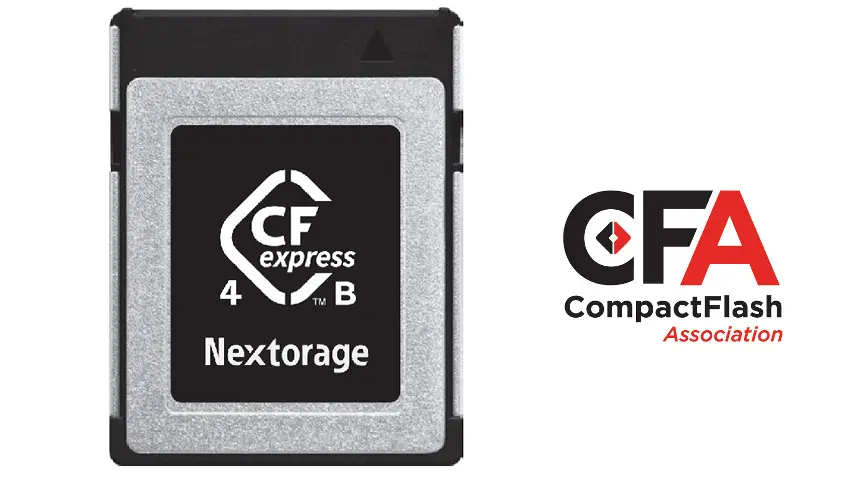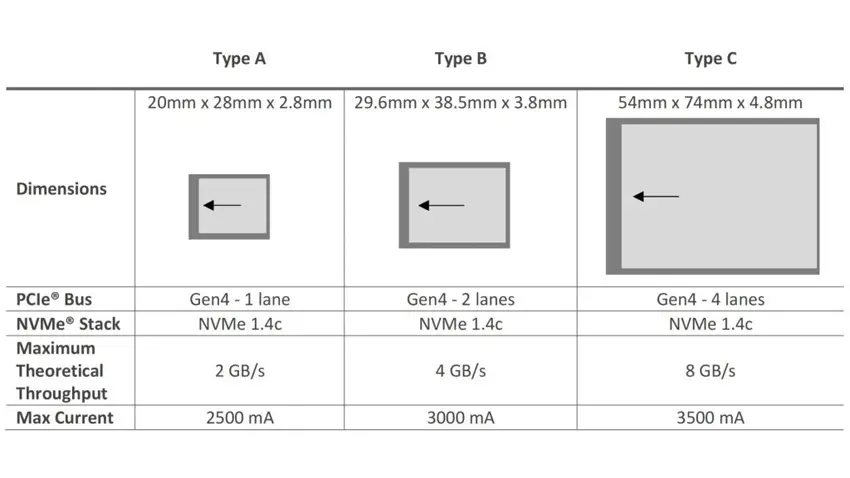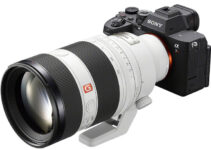The Compact Flash Association has announced a new fourth-generation specification for CFexpress card design.
The new specification, promises performance boosts of up to twice that of the current Type 3 design spec, for faster read/write speeds and high-speed data transfer of large files for 8K video and beyond.
With a maximum throughput of up to 2GB/s per PCIe lane, the new Gen 4 PCIe spec provides what is described as 16 “Giga transfers per second” to reach the 2GB threshold.

Image Credit – CFA, Nextorage
Though conventional media cards rarely reach or even surpass the theoretical maximum of any spec design, the new barometer will certainly benefit content creators as cameras become capable of higher and higher resolutions.
CFexpress 4.0 promises professional content creators will be able to scale their content seamlessly, while reducing the development cycle of cameras, according to Sony’s Hiroshi Machida.
The new video performance guarantee (VPG) will also be upgraded to accommodate the PCIe Gen 4 standard. Currently, the VPG400 standard represents the pinnacle of CFe speed performance.

Image Credit – CF Asso.
The transition to CFe Gen 4 also promises to be seamless for manufacturers, as the association states that the design spec will utilize the same underlying bus and logical interfaces of PCIe and NVMe to maintain the exact same form factors.
This should also be beneficial to content creators who aren’t ready to upgrade to a newer camera platform just to take advantage of the new speed specification.
“With the evolutionary approach in defining the new CF express 4.0 specifications, end users can preserve their investments made in CFexpress 2.0 removable media cards while enjoying cutting-edge use cases with the higher performance CF express 4.0 cards,” stated Fujinawa. “This is a win-win for the installed base and the growing CFexpress ecosystem.”
While the new CFe Gen 4 spec is not expected to hit the market until 2024, some manufacturers have already begun development using the new standard. Nextorage plans to release a Type B CFexpress card utilizing Gen 4 architecture with a planned release window of “early 2024.” The company is also planning on offering hardware that can enable the cards to “reach their peak performance.”
Once this card hits the market, it’s a safe bet that heavy hitters like SanDisk, Lexar, and Prograde will soon follow suit. Or maybe even beat it to the punch.
Disclaimer: As an Amazon Associate partner and participant in B&H and Adorama Affiliate programmes, we earn a small comission from each purchase made through the affiliate links listed above at no additional cost to you.




